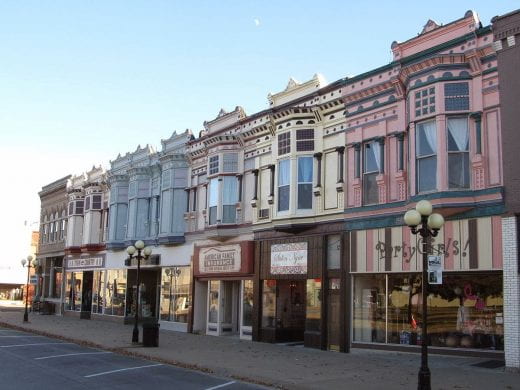In today’s Better Kansas, we touch on financial planning for the holidays, 2020 Census, SNAKES, corn and soybean status and crop irrigation research and outreach. This is a small glimpse of what K-State Research and Extension across the state has to offer. Share on social media and subscribe! – Mary Lou Peter mlpeter@ksu.edu
Better Living, Better Communities
IT’S ONLY AUGUST, BUT THIS MAY BE THE BEST TIME OF YEAR TO ASK THOSE WE HOLD NEAR AND DEAR FOR holiday gift suggestions. The thinking is that we can spread shopping (and the expense) out over a few months rather than wait until the last minute. Sometimes it doesn’t work, but it’s worth a try. We don’t really know what December in the time of COVID-19 will look like, but some things probably will not change – gift giving, gatherings (of people at least in your bubble) and possibly travel. Christmas Spending: Planning Ahead Matters gives us things to think about. Maybe we can buffer a little holiday stress by planning ahead.
A K-STATE RESEARCH AND EXTENSION SPECIALIST this week pointed out that one in three Kansans still have not responded to the 2020 Census. If you haven’t already, please take a few minutes (I promise, it’s no more than that) to go online or call 844-330-2020 OR dig out that paper form you may have received months ago, fill it out and mail it back. It truly is shorter than I remember from previous census forms and the stakes are huge. The results determine congressional representation, how billions of dollars in federal funding are allocated and other decisions that will impact every one of our communities. Decisions about where to build new schools, new roads, where to offer grants for community mental health, and much more are based on this data. Read about the census in Kansas, plus a Wichita Eagle newspaper article sheds more light on implications for the state. You may have to sign up for an account to read it, but it’s free.
Better Farming, Ranching and Gardening
I WAS IN CENTRAL KANSAS RECENTLY ON A FRIEND’S FARM and I admit, I was keeping a watchful eye out for snakes. With so many of us spending time outdoors right now, reading up on the myths, habitat, control and benefits (yes, there are some), is a good idea. Some of the common poisonous types we have in Kansas are cottonmouth, Copperhead, Massasauga and Timber Rattlesnake. But not all snakes are poisonous and we have many in Kansas that are not. To learn more, including how to tell a poisonous from a non-poisonous, check out Snakes: Urban Wildlife Damage Control.
SOYBEANS AND CORN ARE IMPORTANT CROPS IN KANSAS and this year’s crops are coming along but there are always challenges, including diseases. Southern rust, gray leaf spot, stalk rots and an interesting disorder called lesion mimic have shown up in some Kansas corn. Soybean fields have exhibited signs of (love this name) frogeye leaf spot, as well as Septoria brown spot and bacterial blight. Take a look at Status of disease pressure in corn and soybeans for pictures and descriptions of what to look for and potential ways to manage them. The Kansas corn crop was rated 15% excellent, 48% good, 25% fair, and 12% poor to very poor as of Aug. 16, according to the USDA’s National Agricultural Statistics Service. Soybeans were rated 19% excellent, 50% good, 25% fair and 6% poor to very poor. Data for weekly reports is contributed by USDA’s Farm Service Agency, K-State Research and Extension, and other reporters across the state.
WATER IS NECESSARY FOR LIFE OF ALL KINDS and in areas where it’s scarce, it’s even more important to get the most out of every drop. Making crop irrigation as efficient as possible is at the heart of the water management research program at the Southwest Research-Extension Center in Garden City and other research centers. Check out current projects and learn about Water Technology farm outreach efforts through K-State Research and Extension collaborations with the Kansas Water Office and privately-owned farms in western and southern Kansas, and other agencies and organizations. Through the vision and generosity of those farmer-collaborators, the public is able to view how new irrigation technologies and management techniques work on real-world farms.
_
For more resources and activities, contact the K-State Research and Extension office in your area. Check out our other blogs and subscribe to our weekly emails here: https://www.ksre.k-state.edu/news/blogs/










